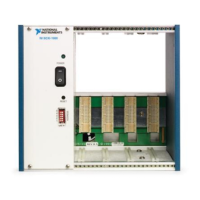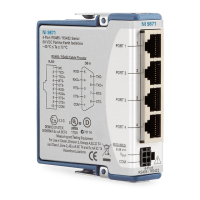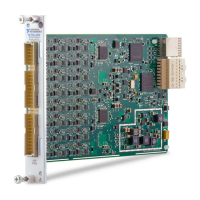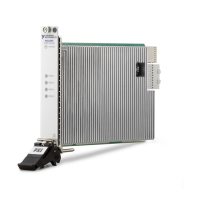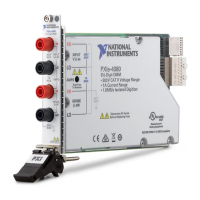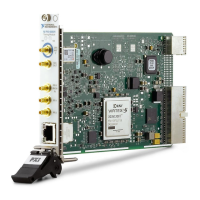Chapter 4 Connecting and Using Accessories and Transducers
© National Instruments Corporation 4-23 Getting Started with SCXI
Using Internal Half-Bridge Completion
Your SCXI-1122 includes half-bridge completion for half-bridge and
quarter-bridge setups. The completion network consists of two 2.5 kΩ
±0.02% ratio tolerance resistors with a temperature coefficient of
2 ppm/°C. These resistors are connected in series. To use the network,
connect the VEX/2 screw terminal on the terminal block to the negative
input of the channel of interest, as shown in Figure 4-13.
Figure 4-13.
Connecting a Quarter-Bridge Strain Gauge to Channel 0
Note
When using the half-bridge completion network witha quarter-bridge configuration,
you must use an extra resistor to complete the bridge. Place this resistor on the terminal
block between the positive input channel and the negative excitation output.
Analog Circuitry in the SCXI-1122
The analog circuitry consists of a relay multiplexer, a
software-programmable gain isolation amplifier, software-programmable
filtering, a temperature sensor channel for cold-junction compensation,
calibration circuitry, and voltage and current excitation channel outputs.
CH+0
CH
–
0
VEX/2
VEX
–
SCXI-1322 Terminal Block
120
Strain
Gauge
VEX+
120
Dummy
Resistor
